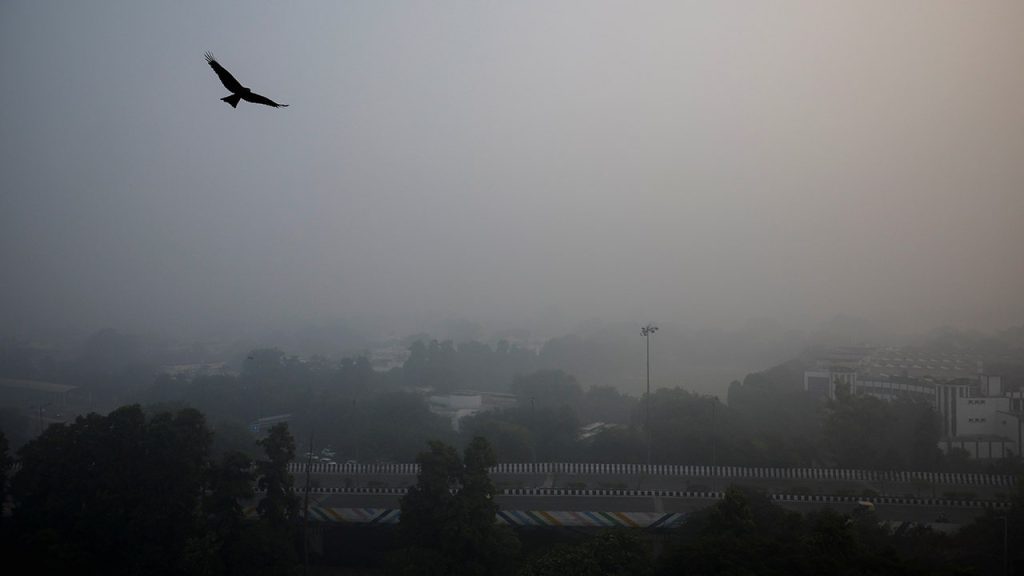The Indian government has implemented several new measures in an effort to combat the worsening air quality in New Delhi, which is currently the most polluted capital in the world. These measures include a ban on non-essential construction, urging residents to avoid burning coal for heating, and sprinkling water with dust suppressants on roads. The goal is to reduce the toxic smog that has caused disruption to flights and obscured famous landmarks such as the Taj Mahal and the Golden Temple.
Delhi’s Chief Minister Atishi has also directed all primary schools to shift to online classes in an effort to protect the health of students. The government is appealing to citizens to use more public transportation and avoid using coal and wood for heating. The severity of the air quality in New Delhi is evident in the live rankings kept by Swiss group IQAir, which currently rates the city’s air quality at 424, the worst amongst global capitals. The city faces smog every winter as cold air traps dust, emissions, and smoke from illegal farm fires.
Officials have attributed the high pollution levels in New Delhi to a combination of factors including high pollution, humidity, becalmed winds, and a drop in temperature. These conditions have led to a rise in allergies, coughs, and asthma attacks, particularly among children. Hospitals are seeing an increase in patients seeking treatment for respiratory issues. The minimum temperature in Delhi has also dropped, exacerbating the situation. The earth sciences ministry has predicted that pollution levels in New Delhi will remain in the “severe” category before improving to “very poor”.
The use of stubble burning in neighboring states of Punjab and Haryana is a major contributing factor to the pollution in New Delhi, accounting for around 38% of the pollution this year. The number of farm fires to clear fields in northern India has been steadily increasing, further worsening air quality in the region. Meanwhile, Lahore, the capital of Pakistan’s eastern province of Punjab, was rated the most polluted city in the world on Thursday, highlighting the severity of the air pollution crisis in the region. Authorities in Lahore are also dealing with hazardous air quality levels.
Overall, the Indian government is taking urgent steps to address the air quality crisis in New Delhi and other parts of Northern India. By implementing bans on non-essential construction, urging residents to avoid burning coal for heating, and taking other measures to reduce pollution levels, they hope to alleviate the health risks associated with toxic smog. The situation is being closely monitored by health officials, and efforts are being made to protect vulnerable populations, such as children, who are particularly at risk from respiratory illnesses caused by poor air quality.


